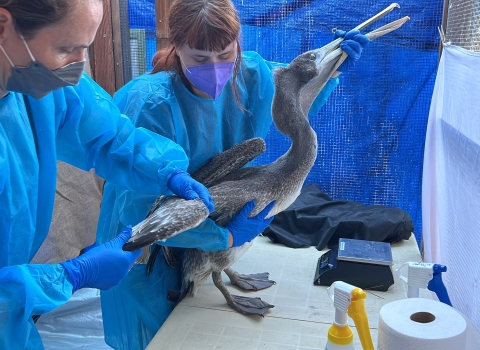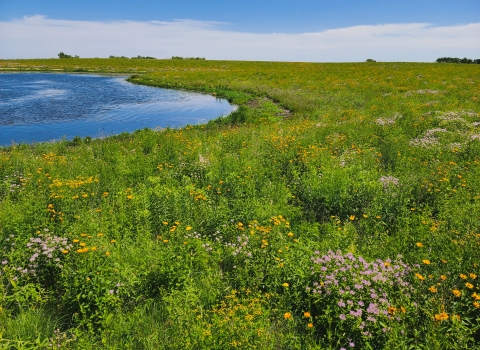DENVER – Nestled in the heart of Utah, a perennial plant in the bean family is surviving in its small domain. At the end of the 20th century, concerns over residential development, highway widening, and livestock grazing and trampling, combined with a small population size, prompted the U.S. Fish and Wildlife Service to protect the species under the Endangered Species Act. Today, after re-evaluating those threats, the Service has determined listing is no longer warranted and is proposing to remove the Deseret milkvetch from the Federal List of Endangered and Threatened Plants.
The Deseret milkvetch grows only at elevations between 5,400-5,600 feet on steep, sandy hillsides near Birdseye, in central Utah.
Today, the Service concludes that the threats to this micro-endemic either have not occurred to the extent anticipated, are being adequately managed through a conservation agreement, or the species is more tolerant of these stressors than originally known.
Significantly, the Service, Utah Division of Wildlife Resources, Utah Department of Transportation, and Utah School Institutional Trust Lands Administration developed an interagency conservation agreement for the Deseret milkvetch, which will remain in effect through 2036. The conservation agreement protects approximately 74 percent of the total Deseret milkvetch habitat and establishes goals for the long-term survival of the species. The Service also worked with Utah partners to develop a post-delisting monitoring plan to ensure that the Desert milkvetch remains secure following delisting.
“Thanks to the conservation agreements put in place by our Utah partners, the Deseret milkvetch has significantly increased in numbers and expanded across its range,” said U.S. Fish and Wildlife Service Regional Director Noreen Walsh. “Their commitment to the continued management of the Deseret milkvetch will ensure this plant species continues to thrive well into the future.”
The Deseret milkvetch has likely always been geographically restricted. When the species was listed in 1999, its range was estimated to encompass less than half a square mile, with a population of approximately 10,000 plants. Today, the occupied area has almost doubled, while the population has reached some 200,000 plants and rising.
The proposed rule will publish in the Federal Register on October 2, 2017. The Service will accept comments regarding the proposal for 60-days after publication. Interested parties can submit comments electronically at http://www.regulations.gov. In the search box, enter docket number FWS–R6–ES– FWS–R6–ES–2016–0013, and then click on the “Comment Now!” button.
Comments will also be accepted via U.S. mail or hand-delivery: Public Comments Processing, Attn: Docket No. FWS–R6–ES– FWS–R6–ES–2016–0013 U.S. Fish and Wildlife, MS: BPHC, 5275 Leesburg Pike, Falls Church, VA 22041-3803. Please note that submissions merely supporting or opposing a potential delisting, without supporting documentation, will not be considered in making a determination.
The Service will post all comments received on http://www.regulations.gov. This generally means that the agency will post any personal information the public provides.
The mission of the U.S. Fish and Wildlife Service is working with others to conserve, protect, and enhance fish, wildlife, plants, and their habitats for the continuing benefit of the American people. We are both a leader and trusted partner in fish and wildlife conservation, known for our scientific excellence, stewardship of lands and natural resources, dedicated professionals, and commitment to public service.
follow our tweets at http://twitter.com/USFWSMtnPrairie, watch our YouTube Channel at http://www.youtube.com/usfws and download photos from our Flickr page at http://www.flickr.com/photos/usfwsmtnprairie/.


